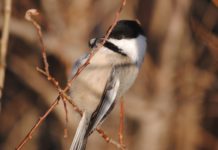
The Little Brown Bat (myotis lucifugus) is the most common bat species in Alberta. While some little brown bats migrate to the Eastern US, many stay in Alberta and hibernate in caves or abandoned mines. During hibernation they spend 5 – 7 months in a deep sleep called torpor in which their metabolic rate and body temperature decrease markedly. This is a way to conserve energy. If bats are woken during hibernation, they can run out energy and starve.
Bats are an important species in our eco-system eating more than half their weight in insects every night during the summer.
Fun Facts:
- Little Brown Bats have the largest distribution of any Canadian bat, found in all provinces and territories except Nunavut
- Little Brown Bats can live up to 34 years
- Little Brown Bats are not blind but do use echolocation to hunt and situate themselves
- Bats are the only mammals capable of true flight
- Little Brown Bats consume approximately 1000 insects a night
Little Brown Bats are susceptible to a disease called White Nose Syndrome which causes fungus to grow on their nose waking up the bats during hibernation. There is no cure for White Nose Syndrome. To prevent the spread of White Nose Syndrome, do not visit non-commercial caves unless accompanied by an expert.
CWRS receives many Little Brown Bat patients every year, often found starving or with injuries. If you find an injured or orphaned bat in distress, please contact the Calgary Wildlife Rehabilitation Society hotline at 403-239-2488, for tips, instructions and advice, or look at the website at www.calgarywildlife.org for more information.









